Sometimes when I need a few Q&D close-up record photos I use an ordinary digital compact camera. In this instance to take a record photo of a large coin I used a Fuji f47 camera in the macro mode (the flower symbol) with the zoom lens at the widest setting. I always use natural window light plus a polystyrene reflector to throw some light back into the shadow areas. Sheets of polystyrene packaging material are saved for this purpose. A custom white balance is always set on the camera to ensure accurate colour. A tripod is not used as I find it easier to use a copy stand but in this instance the camera was handheld. To ensure stability and avoid camera shake, I knelt one knee on the seat of a dining chair with my forearms supported on the top of the back of the chair ... and with the camera held in my fingers. This method of support is surprisingly stable for exposures of up to a few seconds if necessary but I always take several pictures to 'play the percentages' and ensure sharpness. I used the camera's live view monitor to compose the picture and ensured that the image was 'round' by twisting the camera to be as perpendicular and parallel to the subject plane as possible. I find that the Fuji f47 and the Fuji f30 are both good tools for close-up photography especially as their low light capabilities are better than most other compacts. The coin was supported on a 35mm film canister of lesser diameter than the coin to isolate it from the background. There is some shadow showing to one side of the coin; without the polystyrene reflector the shadow would have been harsher. A piece of white card could have been used as a reflector instead of the polystyrene.
The subject is a Cartwheel Twopence. The British Cartwheel Penny and Twopence were minted in 1797 and 1798 because King George III thought it was a sensible idea for the people to possess a coin equal in value to the then current value of copper. Since one avoirdupois ounce of copper was worth One Penny, both one and two ounce coins were minted for two years - each bearing the year 1797. The front (obverse) of the coins bears the image of King George III. The reverse bears the image of Britannia seated and looking right ... but opposite sides of the coin are minted 'upside down' compared to the other. The large penny (1 avoirdupois ounce , 36mm – diameter, 3mm - thickness) and this even larger two pence coin (2 avoirdupois ounces, 41mm – diameter, 5mm - thickness) were minted entirely of copper with no added metals to strengthen them ... thus the unpopular coins damaged very easily. These were the first coins struck at the Birmingham Soho Mint in England using James Watt's and Matthew Boulton's steam-powered coin presses. Because the coins proved to be so cumbersome to carry around they were named 'Cartwheels' and eventually withdrawn from circulation and melted down. Imagine that six 2 pence coins weighing 12 ounces ie ¾lb. had a value of one shilling - equivalent to 5p today.
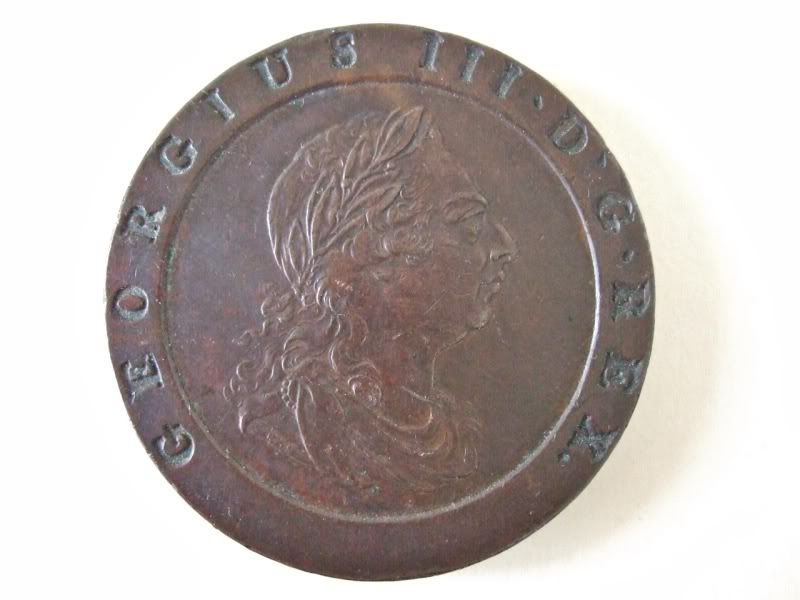
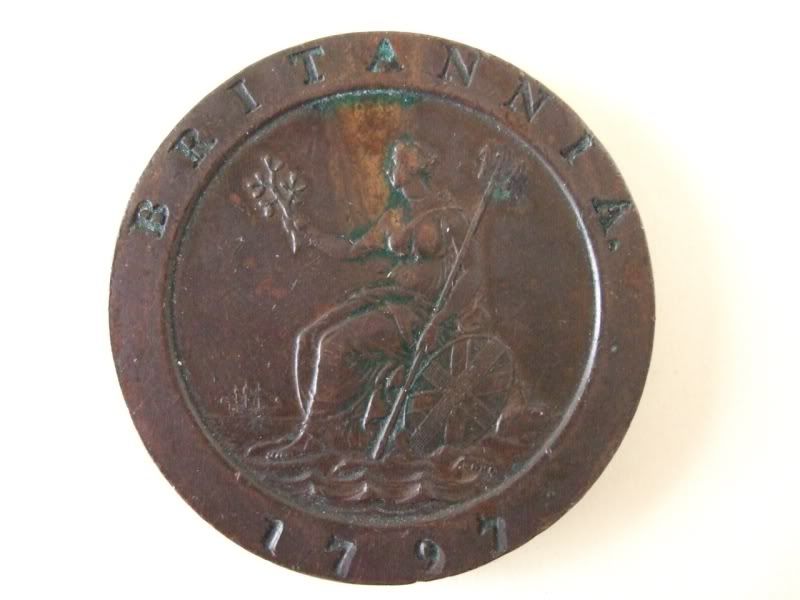
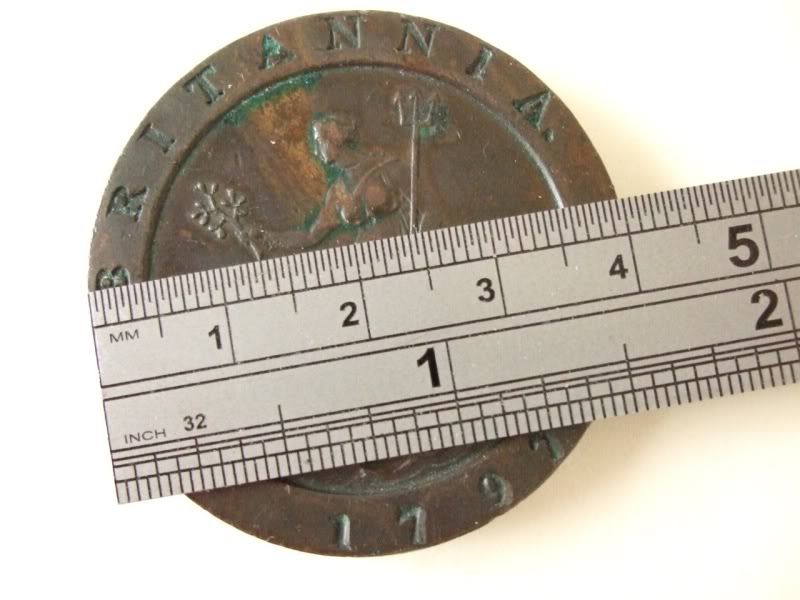
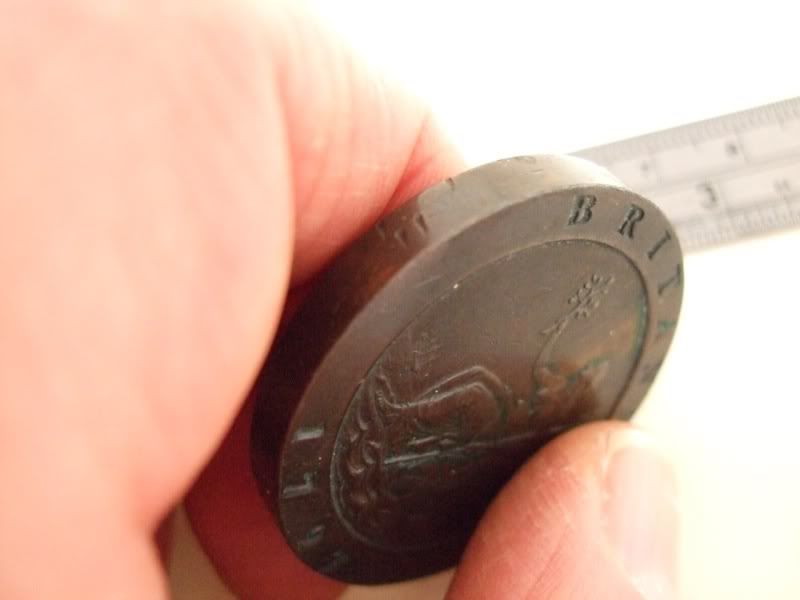
Note the thickness of the coin.
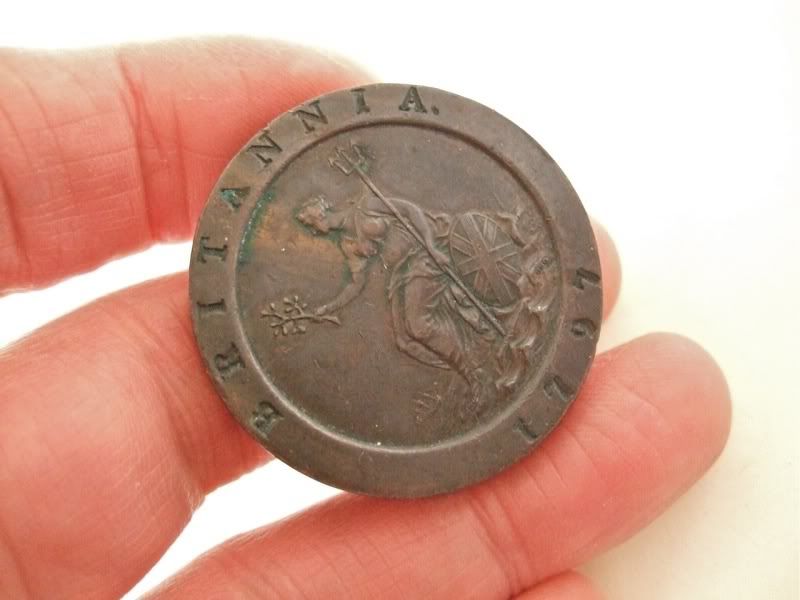
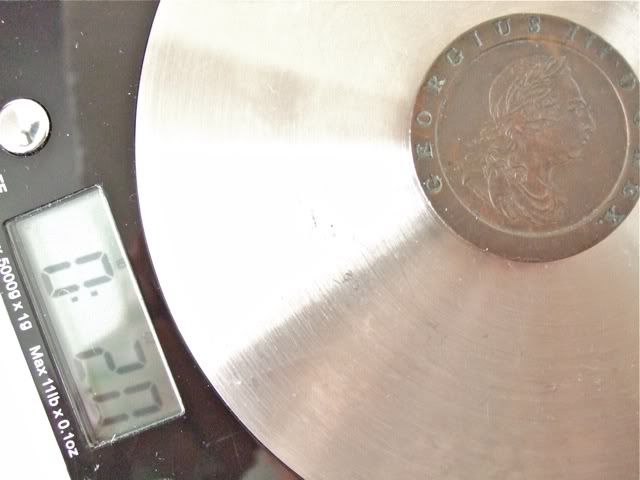
These coins are fairly scarce but not rare. This example is scarcer by virtue of its nice condition ie it is not badly damaged. Many are damaged because the pure copper is so soft compared to modern coins. Value depends on condition and this particular example probably has a dealer's sale value c. £100 to £200.
Cheers
dunk
And now for something completely different.






